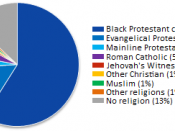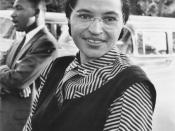Inter cultural Communication in the WorkplaceThe United Nations Economic, Social, and Cultural Organization (UNESCO, 2002) described culture as follows: "... culture should be regarded as the set of distinctive spiritual, material, intellectual and emotional features of society or a social group, and that it encompasses, in addition to art and literature, lifestyles, ways of living together, value systems, traditions and beliefs" (Wikipedia, 2006). Organizations are microcosms of the society in which they exist. As such, they inherit societal challenges and struggles. How organizations respond to these challenges depends on leadership, the organization's mission and values, group culture, and of course, external factors such as legislation (About, Inc., 2006). The EEOC website indicates that in fiscal year 2004, it received approximately 27,696 charges of race discrimination and resolved 29,631 race charges in fiscal year 2004, recovering $61.1 million in monetary benefits for charging parties and other aggrieved individuals. This amount does not include any monetary benefits that may have been obtained through litigation.
The EEOC has reported an increasing number of color discrimination charges, which have increased by 125% since the mid-1990s - from 413 in fiscal year 1994 to 932 in fiscal year 2004. Post-9/11 reports indicate that religious intolerance and discrimination toward middle-eastern looking employees has also increased (Pizarro-Eckert, S., 2006).
Several years ago, I witnessed a confrontation in the workplace between an African American man and a Jewish woman, both working in a small four-person office. It was a fairly harmonious work environment, everyone got along well for the most part. It was a week before Martin Luther King, Jr. Day, and the man went to his boss and advised him that he would not be coming to work on the holiday, and would instead be participating in the march. At the time, that particular holiday was...


